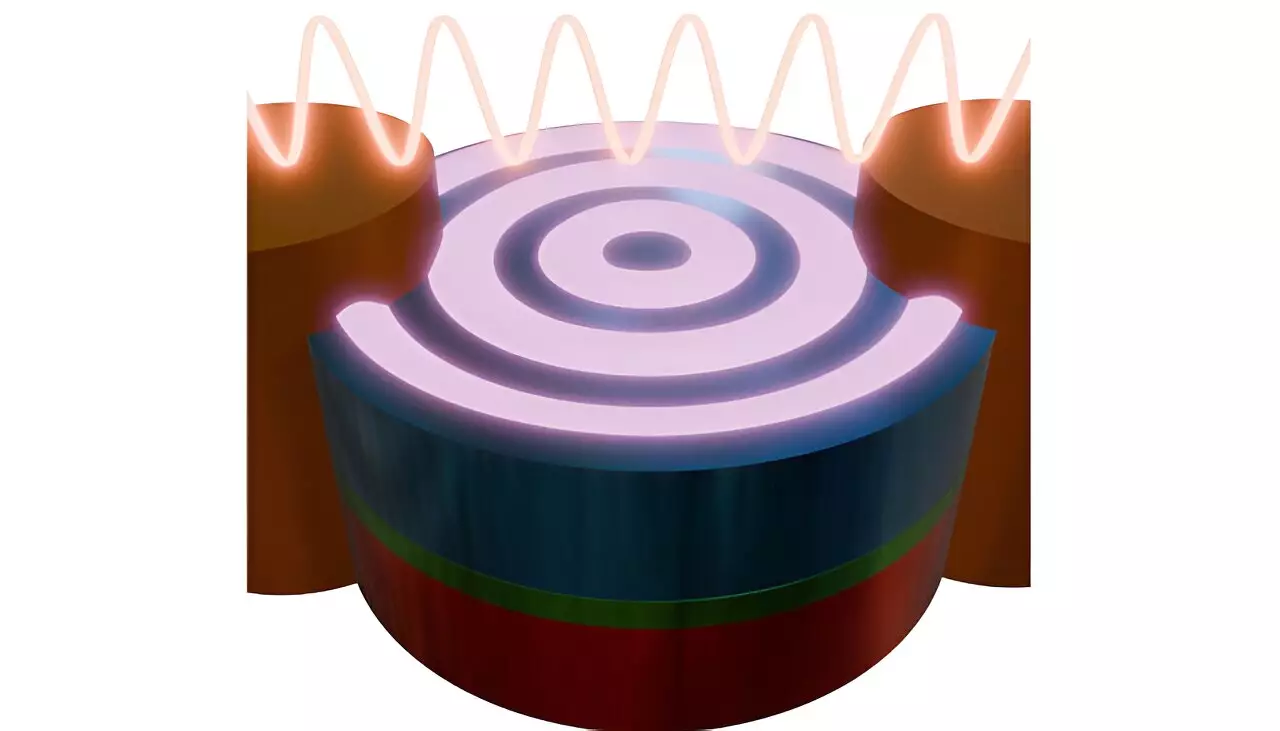In recent years, advancements in computing technology have increasingly focused on miniaturization and energy efficiency. As devices like laptops and smartphones continue to shrink, the traditional approaches to processing capabilities face significant challenges. Recent research from a collaboration between institutions in Austria and Germany shows promise in addressing these limitations through innovative use of magnonic circuits. The implications of this research may redefine efficiency in computing, paving the way for next-generation technologies that utilize spin waves as a medium for data transfer.
Magnons are fluctuations in magnetization that propagate through a magnetic material, analogous to waves on a surface of water. When one considers the potential of these magnons in computing, a vivid analogy comes to mind: much like ripples created by a stone dropped in a lake, these spin waves can carry information with minimal energy loss. This characteristic of magnons makes them compelling candidates for reprogramming and controlling data flow in future computing architectures.
In typical semiconductor architectures, billions of transistors operate under complementary metal oxide semiconductor (CMOS) technology, which, despite its advantages, is reaching physical and efficiency limitations. As devices become smaller, these limitations threaten the sustainability of silicon-based technologies, particularly concerning power consumption and energy losses. The emergence of adverse effects in micro and nano-scale devices necessitates the search for alternative methods—one of which is leveraging the unique properties of spin waves.
Breakthrough in Spin Wave Generation
The latest study, published in Science Advances, highlights a transformative approach to generating spin waves with unprecedented efficiency. Previous methods employed state-of-the-art nano antennas that require meticulous fabrication processes in clean-room environments, leading to high production costs and limitations in scalability. In contrast, the new methodology proposed by the research team employs lateral alternating current geometries in synthetic ferrimagnetic materials. This not only simplifies the spinning up of magnonic systems but also enhances the efficiency of wave production by several orders of magnitude.
The pivotal role of alternating currents in this developed architecture enables the manipulation of ferromagnetic and antiferromagnetic layers. When the currents travel through these layers, they create swirling magnetic patterns conducive to generating spin waves. This innovative design circumvents the previous constraints associated with nano antennas, allowing for more streamlined and effective wave excitation.
The researchers employed high-resolution imaging techniques, notably the ‘Maxymus’ X-ray microscope, to observe the behavior of these spin waves on a nanoscale. Such monitoring facilitated an in-depth understanding of the generated waves’ characteristics and potential applications. Furthermore, the incorporation of special materials capable of altering their magnetization upon applying strain adds an extra layer of functionality to the system. This dynamism allows researchers to steer the spin waves, which could lead to active manipulation of data pathways within magnonic devices—an exciting prospect for computing technologies.
The application of advanced micromagnetic simulation software, known as magnum.np, played a crucial role in understanding the mechanics behind this exciting technology. These simulations may lead to targeted designs that enhance the performance of magnon-based systems while ensuring they can be adapted to a variety of applications.
The ability to dynamically control the direction of spin waves could revolutionize the field of computing. A reprogrammable magnonic circuit not only signifies an evolutionary step for data processing but also represents a foundational change in energy efficiency. The findings from this research indicate a tangible pathway toward more adaptable and versatile computing systems, capable of responding to the increasing demands for agility and efficiency inherent in modern technology.
This promising breakthrough urges further exploration of magnon-based architectures to realize their full potential in practical applications. As the race for more efficient computing continues, this research stands at the forefront, enabling a shift towards next-generation technologies that could ultimately reshape how we approach computing forever.


Leave a Reply